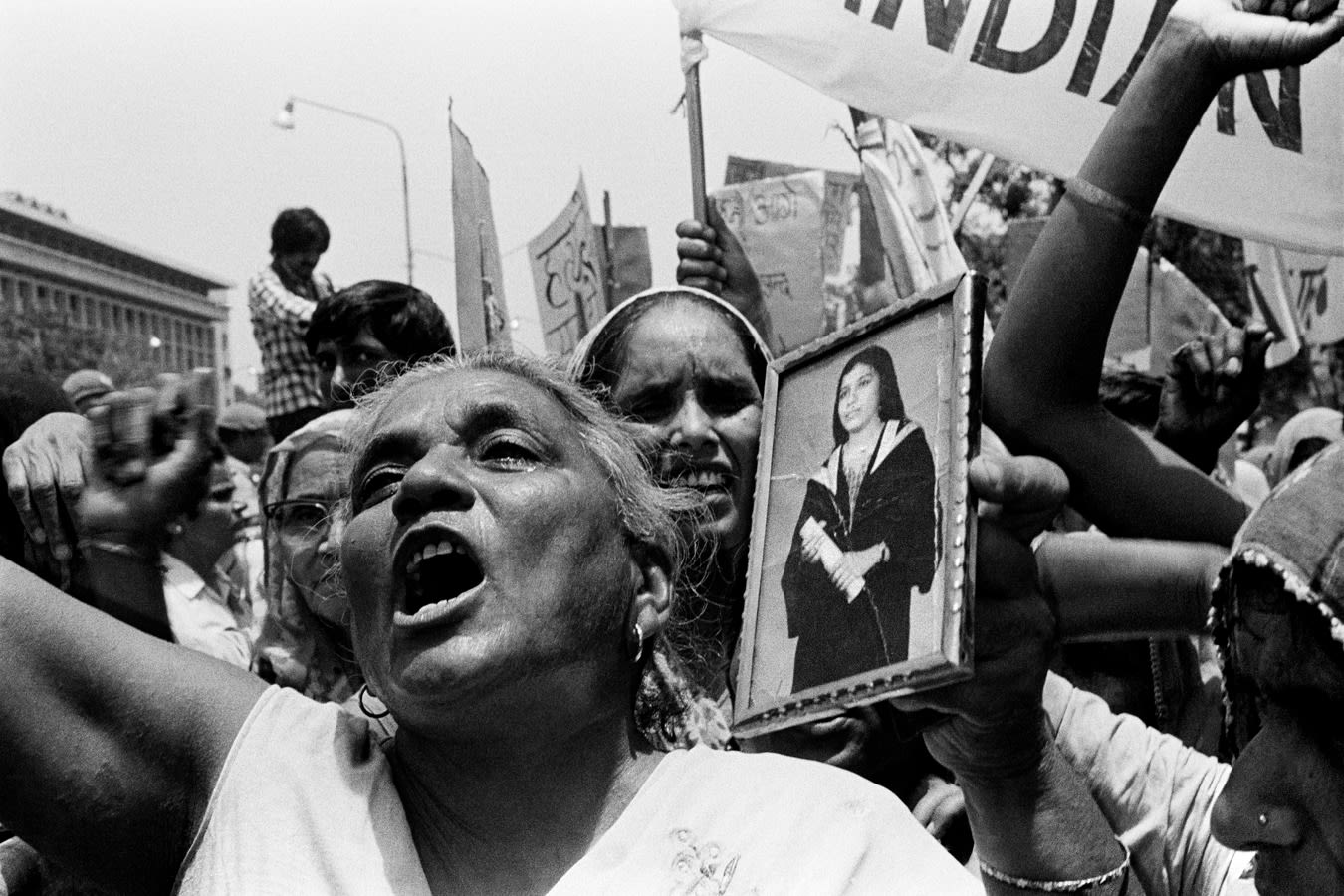














Sheba Chhachhi
Further images
-
(View a larger image of thumbnail 1
)

-
(View a larger image of thumbnail 2
)

-
(View a larger image of thumbnail 3
)

-
(View a larger image of thumbnail 4
)

-
(View a larger image of thumbnail 5
)

-
(View a larger image of thumbnail 6
)

-
(View a larger image of thumbnail 7
)

-
(View a larger image of thumbnail 8
)

-
(View a larger image of thumbnail 9
)

-
(View a larger image of thumbnail 10
)

-
(View a larger image of thumbnail 11
)

-
(View a larger image of thumbnail 12
)

-
(View a larger image of thumbnail 13
)

-
(View a larger image of thumbnail 14
)

-
(View a larger image of thumbnail 15
)

Drawing on both the vernacular studio tradition and documentary, this series places the staged portraits alongside photographs from Chhachhi’s archive, taken over more than 10 years of activism.
Assumptions about the indexical nature of the photograph continue to pervade the quotidian visual realm. Examining the truth claim of photography opens up vexed questions around objectivity, representation and the nature of the real. Interested in making the subjective and constructed nature of photography explicit, and working with the photograph as fiction rather than as document, I moved from documentary practice to developing staged collaborative portraits.
I invite seven women – friends, sisters and fellow-activists – to collaborate with me in developing a series of staged portraits. Each woman chooses a place, a posture, materials and objects that she feels can speak of her, tell her story.
Apa brings a small hut, meticulously made from a shoebox, glue and tinsel paper: ‘My story is a shanty town story.’ Shanti borrows an axe, spreads wheat on the floor and opens her diary. Sharada offers a bus-pass, a tiffin-box, a set of glass marbles and, unexpectedly, a seat in a DTC bus as the place where she is most with herself. The mise-en-scène is located at diverse sites in Delhi: Sathyarani chooses the steps of the Supreme Court of India, Devi her single-room home in a resettlement colony. Urvashi wants to set up her collection of writing machines on the street, but we have to compromise and use a spare room.
The process of developing these ‘theatres of the self’ is complex and long-drawn-out, taking shape through intense, intimate interaction over several months with many revisions and retakes. Both subject and photographer are altered, the conversation of independent individuals made possible by a mutual becoming. We create an intersubjective field: a space of shared subjectivities that is neither hers nor mine but comes into being between us, mutually constitutive and unique to that moment and that process.
A quasi-fictional representational method emerges, which draws on vernacular practices of the bazaar studio yet is significantly different. Multiple selves appear: each woman includes a previous photograph within the set-up, refusing to be contained within the essentializing unique portrait. We are making fictional truths, performing the real.
